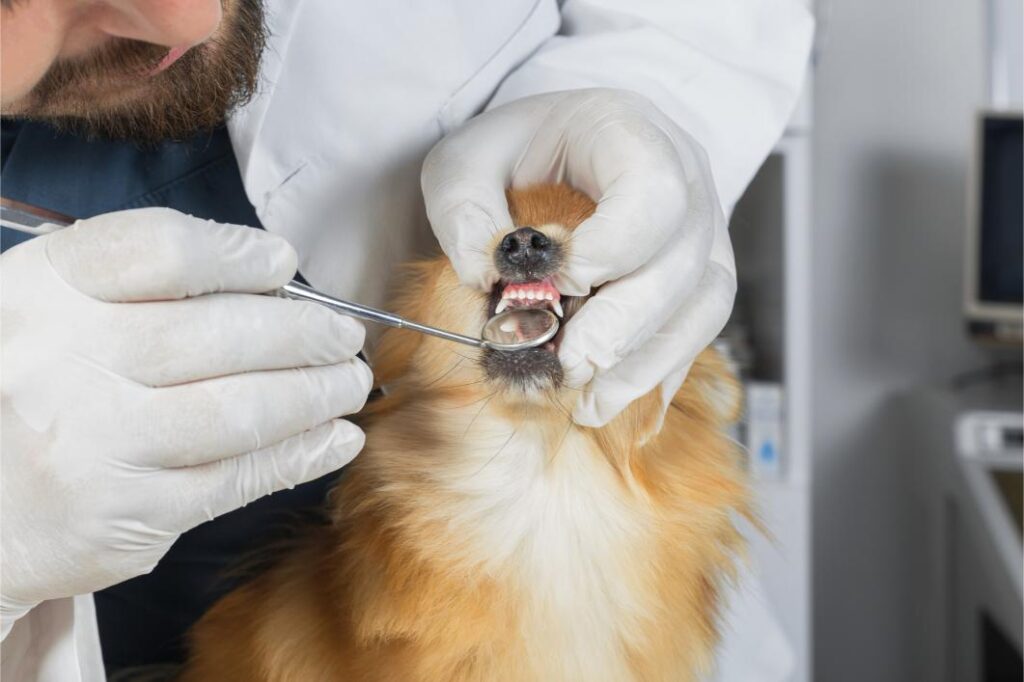Pet Dental Health Month: The Importance of a Fresh Smile for Your Pet
Remember when your pet was young? When they flashed you a big, happy grin you were probably struck by the whiteness of their teeth. If it’s been a little while since you saw that dazzling, shiny, clean smile, they may be due for some extra dental attention. Since we know that a truly healthy pet is only as healthy as their mouth, pet dental health month is the perfect opportunity to identify any possible problems and work toward greater wellness and vitality, starting with the teeth and gums.
The Connections
Plaque, the sticky film found on teeth, is formed by oral bacteria and food particles. Over time, minerals in the saliva harden plaque into tartar, or dental calculus. The combination of plaque and tartar is highly detrimental to pet health. Despite its progressive nature, periodontal, or gum, disease can be slow and subtle. The good news is that, with regular care, it is entirely preventable.
Promoting Pet Dental Health
If plaque and tartar are left alone, the following signs of periodontal disease may become obvious over time:
- Yellow, brown, or oddly discolored teeth
- Broken, loose, or cracked teeth
- Swollen, red, inflamed, or bleeding gums
- Bad breath
- Dropping food or chewing on one side
- Unexplained weight loss
- Sensitivity to the touch
- Drooling
The above signs of dental disease cause discomfort, pain, and anxiety in most pets, but it can be the tip of the iceberg. As gums recede from the hard tartar build-up on the gumline, oral bacteria can enter pockets formed around the teeth. Without veterinary intervention, these pockets grow deeper. Chronic infection and inflammation can accompany tissue and bone loss. Systemic illness of the heart, kidneys, and liver can be directly linked to oral bacteria as well.
Pet Teeth Cleaning
Introducing a pet to daily tooth brushing at home is an important step toward their health and wellness. Slow circles applied to the surface of the teeth can remove plaque from ever forming and subsequently turning into tartar. Specially-designed pet toothbrushes and toothpaste products can make the experience more fun and rewarding for them. Be patient and calm, always striving for a positive association.
Other Things You Can Do
In addition to brushing at home, there are many chews, treats, water additives, rinses, sprays, and gels that have earned the prestigious seal of approval from the Veterinary Oral Health Council.
When used as part of the multi-pronged approach to pet dental health, these products can help reduce plaque up to 20%.
Pet Dental Health Month
February is pet dental health month. If your pet has never had their teeth and gums examined or professionally cleaned, now is the perfect time to address potential issues. If we see any evidence of plaque and tartar on the teeth during an exam, a professional cleaning under anesthesia is typically the next step. By scaling the teeth, we can remove tartar before cleaning and polishing the teeth. Digital X-rays can show us if periodontal disease extends beneath the gum line.
Please reach out to our staff at (916) 984-0990 with any questions or concerns. Because of the impact on the rest of the body, we care about your pet’s teeth and gums at Blue Ravine Animal Hospital.




